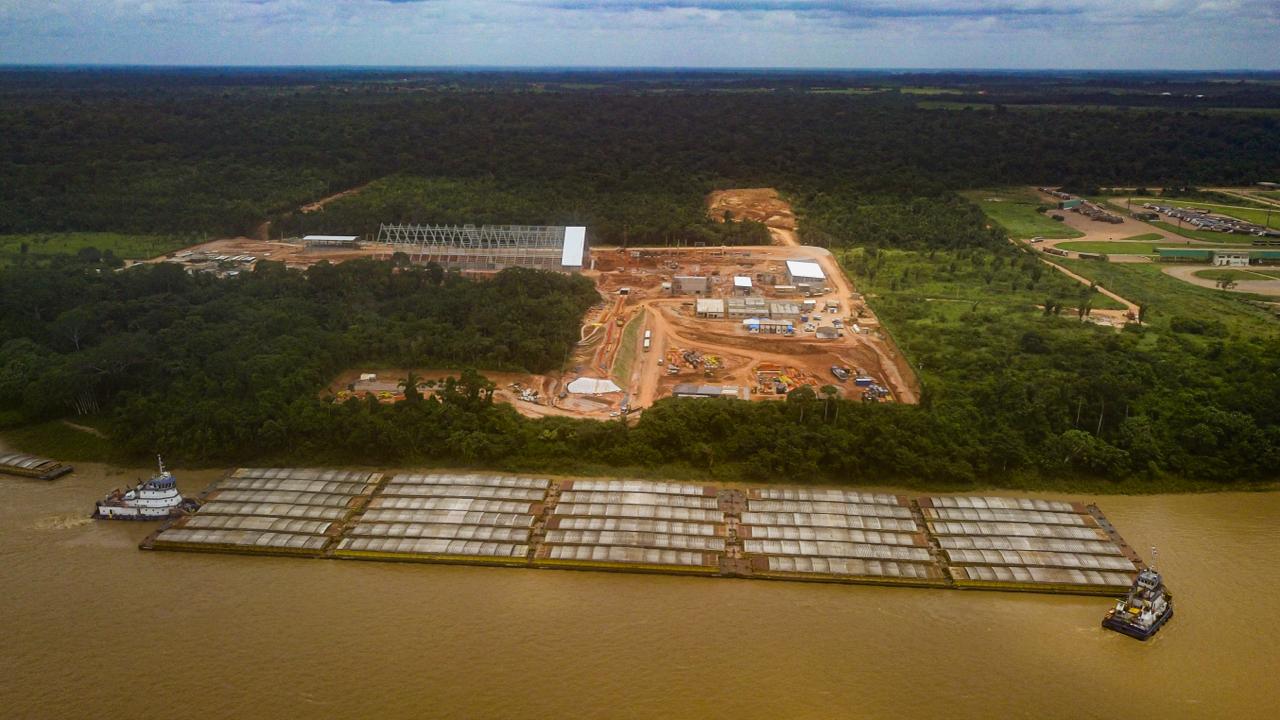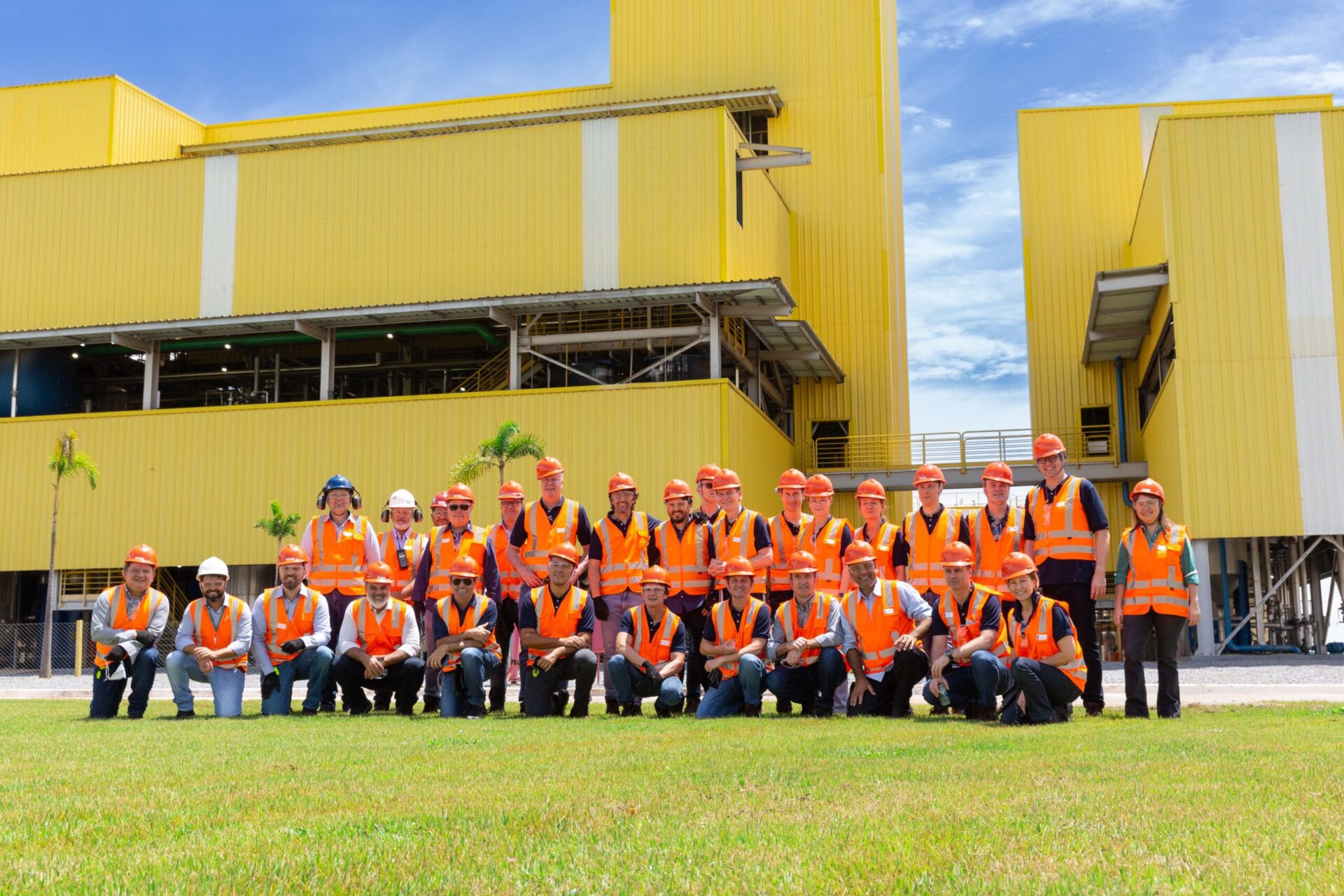29 de June de 2023
Industry leaders share initial results of pioneering effort to decarbonize global supply chains
Industry Leaders Share Initial Results of Pioneering Effort to Decarbonize Global Supply Chains June 29th, 2023 – New York, NY – In an effort to drive mitigation and decarbonization, Sumitomo Corporation of Americas, Bayer, JBS, AMAGGI, Rumo, and SINAI Technologies announced today the initial results of their first-of-its-kind collaboration to collect, allocate, and share primary emissions data across global supply chains. These results are the first step in the CarbonPrime initiative, which is now open for other companies and private sector participants to join going forward.
Since 2020, the participating companies have collaborated toward a proof of concept (POC) to connect primary emissions data from seed processing, agricultural operations, feed and food production, trading, logistics and finally distribution from Brazil to global markets. Using SINAI Technologies’ platform and with the support of industry life-cycle-assessment experts, these pioneering companies have been able to collect, allocate, and share primary data in a secure and reliable way.
“The initial goal here was to share relevant primary data in a supply chain,” explained Mark Lyra, Senior Director, Sumitomo Corporation of Americas, who conceptualized the CarbonPrime initiative.
“Allowing primary emissions data to flow in a supply chain is important because it can provide a solid foundation on which to base investments and other business decisions. CarbonPrime aims to accelerate the deployment of capital in sustainable infrastructure, and data transparency and reliability must be our lynchpin.”
“Enabling supply chain partners to accurately and efficiently allocate and manage emissions is a complex undertaking. To make this initiative possible, a robust software platform that utilizes consistent methods of allocation for the same products throughout the value chain was critical. The initial release of this effort represents a significant milestone, as it provides preliminary results that demonstrate the potential for a new perspective on emissions intensity within a specific pilot value chain,” said Maria Fujihara, Founder & CEO, SINAI Technologies. “We are thrilled to take this first step towards achieving more precise and efficient calculations of emissions data, with the ultimate goal of facilitating data sharing across multiple global supply chains.”
From its inception, the initiative has enlisted the insight of several third party experts to validate the concept, to assess technical viability, and to ensure the effort can lead to advancements in monetizing carbon going forward. Among these organizations are the Rocky Mountain Institute, IETA, and others.
“Visualizing primary data across supply chains is a very important step in helping companies, investors, and policy makers design effective strategies to keep global warming below +1.5o C”, said Paolo Natali of the Rocky Mountain Institute. “RMI is advising WBCSD in their Pathfinder initiative and encourages other industry leaders to develop such capabilities.”
Until now, companies have relied on secondary data to estimate emissions within their supply chains. While these estimates have been instrumental in understanding overall corporate emissions, responsibility, and advancing corporate reporting – secondary data is not adequate to inform investment decisions.
“Investing in emission reduction opportunities is just like any other investment. If I’m buying shares in a company, I want to know how that specific company performs. I need to understand that company’s primary data. Secondary data, like sector wide performance and industry history are relevant, but far from adequate to justify investment in a specific stock,” explained Alasdair Were of the International Emissions Trading Association (IETA)
Enabling Data Sharing to Yield Real Results
At this first stage, the POC chose to keep the primary data scope down to a relevant and manageable level “We had to resist the temptation to boil the ocean,” said Mark Lyra. “The companies involved already have a deep understating of their own emissions and, given their size, an incredible amount of data was available. On the other hand, because of the disruptive potential of this initiative, the group realized it would be best to balance the scope so that results would not only be relevant, but also verifiable by third parties in a reasonable amount of time.”
As highlighted in the infographic, the results of the POC illustrates how the flow of primary data in the supply chain can differ greatly from even the best estimates generated by secondary data. While estimates based on secondary data have played a pivotal role in corporate reporting and understanding emissions on a global level, only primary data can provide the accuracy and reliability to unlock the investment needed to decarbonize global supply chain operations.
The next phase of the POC contemplates expanding the primary data scope to areas such as seed production, fertilizer production, small and medium farmers, and leather products, among others. In parallel, the group will make results available for audit and publish a white paper with the allocation framework developed.
“We have started discussion with some of the Big Four Accounting firms and aim to have results audited this year,” explained Lyra. “This should be fairly straight forward because one of the key principles of this effort was not to reinvent the wheel. The team followed WBCSD Pathfinder framework and industry standards such as GHG Protocol emission factors and allocation principles. The key innovation was to allow industry experts to access primary data and develop a sector specific framework for the application of these standards. This framework will be open source and is likely to evolve over time.”
Conducting the POC in partnership with SINAI was one of the key success factors in this effort. Not surprisingly, companies hesitate when it comes to sharing primary data. After all, emissions are many times calculated based on sensitive operational data such as costs and technology used. SINAI’s platform not only enabled data to be captured and managed at a very granular level, but also provided secure access to third parties so privacy could be ensured throughout the process.
SINAI believes the carbon intensity of a product should be determined by a constant flow of primary data, not a static snapshot in time. The same can be said for the impact of decarbonization investments. For example, the emission reduction resulting from the deployment of solar panels at a meat packing plant in Europe is different from installing the same panels at a similar plant in Brazil.
Laying the Groundwork for a new Carbon Asset
Beyond helping to identify decarbonization opportunities within supply chains, the group also believes sharing relevant primary data may allow the pooling of resources and the monetization of new Carbon Assets. “Now that we have a baseline, we can also start sharing primary data on mitigation opportunities across the supply chain”, explained Lyra. “This could be a game changer for the use of carbon credits, infrastructure investment, and development of digital carbon assets.”
In fact, Mr. Lyra has been in step with the Climate Warehouse project at the World Bank (https://www.theclimatewarehouse.org/) from the beginning. Last November, IETA, the World Bank and the Government of Singapore announced the launch of Climate Action Data Trust (CAD Trust) which is the first part of the Climate Warehouse digital ecosystem to go live. According to Mr. Lyra, the expectation is that this infrastructure could serve as a gateway for the private sector to lead supply chain decarbonization efforts based on audited primary data flows. “When it comes to the low carbon economy, the rules of the game are not set, there are many uncertainties” he explained. “Nevertheless, forward thinking corporations are finding ways to take action and deploy capital based on science, transparency, and reputation. CarbonPrime participants see the need to be proactive in leveraging today’s technology to build the foundations for a positive and equitable transition.”
Next Steps for CarbonPrime
Bayer, AMAGGI, and JBS are the initial leaders in the partnership and have previously announced commitments to achieve a climate-positive approach based on SBTi. Rumo has since joined the project and many more have expressed interest in participating. This is the first time – in any industry – that a collaborative initiative shares results based on primary data compiled throughout supply chain operations. While this first partnership focuses on the agriculture industry, the approach should be applicable across any and all supply chains. After all, the goal is to accelerate the deployment of low carbon solutions globally.
Comments from Supply Chain Leaders Regarding the CarbonPrime POC “Agriculture, more now than ever, is part of the solutions to our planet’s climate challenge. It is crucial to intensify the adoption of sustainable agricultural practices and to strengthen the value of Nature-Based Solutions, but to be fully successful, solutions must work together collaboratively across different industries and throughout the whole value chain”, said Alejandro Girardi, Head of Public Affairs, Science and Sustainability LATAM of Bayer Crop Science. “CarbonPrime reflects this, showing how cooperation and mutual commitment can deliver more efficiency, sustainability and transparency to every stakeholder involved, benefiting growers, the environment, and society as a whole.”
“Taking part in such an initiative with key players within our value chain strengthens AMAGGI’s ESG goals,” said Juliana de Lavor Lopes, AMAGGI’s ESG, Communication and Compliance Director. “We understand that agriculture has a fundamental role in the mitigation of climate change. Therefore, offering climate solutions to global challenges is in line with our sustainability strategy, which includes commitments to reduce our emissions by 2035 and to neutralize net emissions by 2050 (NetZero emissions), according to the Science-Based Targets initiative (SBTi) and the global Race to Zero movement, which we are a part of.
“Climate change is the challenge of our time and we must act urgently to combat the negative effects of global warming and feed a growing world population” said Jason Weller, Global Chief Sustainability Officer, JBS. “As one of the most diversified global food companies, we have an opportunity to leverage our scale and influence to help lead a sustainable transformation of agricultural markets that empowers producers, suppliers, customers, and consumers. Science and data-led collaborative industry initiatives such as this are critical to increase transparency, more accurately benchmark progress and optimize decarbonization investment across our value chain.” In March 2021, JBS, one of the world’s leading food companies, announced its aspiration to reach net-zero greenhouse gas (GHG) emissions by 2040, and this initiative is another step forward.
“Climate change is the challenge of our time and we must act urgently to combat the negative effects of global warming and feed a growing world population” said Jason Weller, Global Chief Sustainability Officer, JBS.
“As one of the most diversified global food companies, we have an opportunity to leverage our scale and influence to help lead a sustainable transformation of agricultural markets that empowers producers, suppliers, customers, and consumers. Science and data-led collaborative industry initiatives such as this are critical to increase transparency, more accurately benchmark progress and optimize decarbonization investment across our value chain.” In March 2021, JBS, one of the world’s leading food companies, announced its aspiration to reach net-zero greenhouse gas (GHG) emissions by 2040, and this initiative is another step forward.
Cristiano Brasil, People and ESG vice president, Rumo said, “the partnership with SINAI offers a platform to centralize data on greenhouse gas emissions from the company’s activities, allowing the targeting of mitigation strategies for the impacts caused, as well as defining goals to reduce these emissions. It is also possible to share data with stakeholders, as part of the monitoring of the value chain, providing transparency to the process.”







